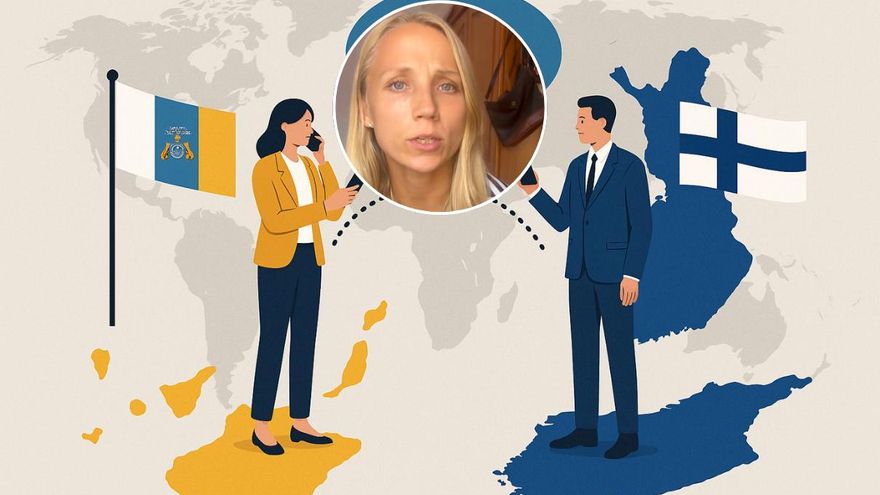Finnish Expat Sets the Record Straight on Canary Islands
Titta Keinanen, a content creator living in Tenerife, has called out the Finnish press for exaggerating and dramatizing the reality of the Canary Islands, projecting a negative and alarmist image of this favorite destination for many Nordic tourists. The Finnish native created a video reviewing Scandinavian media headlines about events in the islands, which consistently receive unfavorable coverage. She decided to explain what really happens here so Finnish travelers wouldn’t be unnecessarily alarmed.
Media Distortion Versus Island Reality
“Media has the power to shape public opinion on any topic by influencing perception through distorted reality,” Keinanen explains. “This is precisely what Finnish media has been doing, rarely understanding the true situation in Canarias because they don’t have correspondents stationed in the region.”
According to Titta, Finnish newspapers portray the archipelago as a dangerous, chaotic destination constantly threatened by natural disasters. “Many acquaintances in Finland have asked me: ‘Are you okay? How’s the situation in Canarias?’ I find myself thinking, excuse me, what are you talking about?” she confessed, surprised that Nordic media tend to blow tourism, climate, and natural phenomena stories out of proportion, creating an image far removed from reality.
Absurd Headlines and Misplaced Blame
The Finnish content creator notes that for many of her compatriots, Canarias has become synonymous with environmental problems or continuous emergencies. All the headlines Titta mentioned focus exclusively on negative aspects without acknowledging any positives.
Among the headlines she highlighted, several particularly aggravate the real situation: “Canary Islands on the verge of collapse from tourism,” “Cockroach plague threatens Finns’ favorite destination,” and “Emergency due to prolonged drought in Canarias.” She even mentioned one case that borders on absurd because it didn’t actually happen here: “Woman dies after shark attack in Gran Canaria.”
“This incident actually occurred in the open ocean,” Titta clarified. “The woman had been on vacation in Gran Canaria, but died thousands of kilometers to the south, where the attack happened.” She explained that the Finnish woman had traveled to Canarias, taken a boat, and gone out to sea where the tragic incident occurred. Such reporting gives readers a very negative impression of the archipelago.
Permanent Crisis or Paradise Living?
Titta observes that media coverage makes it seem like “Canarias is a place in permanent crisis.” With frustrated irony, she comments, “If I only read Finnish media headlines, I get the feeling this is an island where you can’t survive a single day because either sharks will eat you, or cockroaches, or storms will get you.”
For the content creator, this media treatment isn’t just unfair but counterproductive for a destination as dependent on international tourism as the Canary Islands, which remains extremely popular among Finnish visitors for its climate and tranquility.
Record Numbers Tell a Different Story
“Finnish media creates a super-dramatic image about Canarias,” Titta laments. Despite the negative coverage, according to data from the Gran Canaria tourism board, 105,459 Finnish tourists visited the islands last year, representing a 10.7% increase compared to 2023. The Scandinavian market continues to strengthen as one of the strongest sources of visitors, with many citizens choosing Canarias for their holidays.
A Call for Calm and Common Sense
Titta ends with a call for perspective: “Here, when there’s wind or rain, life continues normally. But in the media, it seems like the end of the world. Canarias isn’t a place on the brink of collapse, but a paradise where life goes on with complete normality, despite what the headlines say.”

